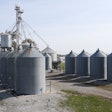While formulation methodology hasn’t changed much in recent years, feed formulators face increasingly unique challenges in their daily workload. For example, when ingredient prices are high and the economy is weak, formulas tend to come under tighter scrutiny, and the responsibility to increase margins falls primarily on their shoulders.
Meanwhile, as technology advances, employers and customers expect instant results, an approach that stands in contrast with developing sound, long-term strategies.
“Formulators have a real balancing act to strike between being very responsive, having information really at their fingertips very quickly, and yet being able to do sensible economic modelling that means they’re making the right decisions not just for today, but for next month or next year,” explains Merryl Webster, managing director, Format International.
The suppliers of feed formulation systems have responded from a technology standpoint by refocusing their products to meet the demands of the ever-evolving feed industry.
“A feed formulation system should enable the company to run its business in a very efficient way by handling enormous amounts of information, which is then used to fulfill all of the animal’s nutrition needs — as well as all of the legal requirements — at the lowest cost possible,” notes Adifo product manager Karel Vervaet.
However, beyond information management, a good formulation system also allows for easy integration, flexibility, accuracy and, on the vendor side, support. It also should have the intelligence to understand what the mill can deliver based raw material stocks and the capabilities of the manufacturing equipment.
Formulation software suppliers aim to develop new techniques for managing the real problems feed mills deal with every day. The following article is an overview of recent advances in feed formulation systems and a preview of developing technologies.
Seamlessly connecting different departments, international locations
As the feed industry consolidates and companies grow and shift toward integrated models with many locations, the number of people requiring access to feed formulations has expanded from the mill to additional departments within the business. However, these employees do not require access to the software for the same reasons. As a result, flexibility has become a key feature in any modern day system, says Benoit Chesnais, EMEA Customers Manager, A-Systems.
Large multinational corporations require software capable of managing increasingly complex situations. To do so, the program must “speak the same language” — both literally and technically. According to Vervaet, globalization and internationalization are two major trends influencing software development.
“Multilingual software is going to be a requirement and, with internationalization, you will find centralization,” he says. Instead of having local country formulation systems, our customers are moving to one central formulation system, accessible from anywhere in the world. The larger the company, the more control they want over what each branch is doing. They want one standardized working procedure, one standardized work flow and, in some cases, one central purchasing division. To do so, the entire company needs to operate on one formulation system.”
Chesnais agrees: “A centralized database makes it possible to bridge geographic and language barriers, but the user should consider the specificity of each local subsidiary.” For example, the specific raw material analysis, the language interface of the software would adjust language of the specific location.
Tools for managing ingredient variability
Ingredient variability has — and always will be — an on-going struggle for feed formulators, but software providers are exploring solutions to make nutrient data readily available across companies and, ultimately, the industry.
“The classic model for linear optimization, which is widely and effectively used today, does not allow the formulator to take into account the non-linear effects of ingredient variability,” Chesnais says, a challenge which is both frustrating for the formulator and a hindrance to the company’s profits.
John Foley, Feed Management Systems’ formulation portfolio manager, explains: “We still have a lot of feed companies working off of book values, which are averages, and they may be over formulating their feed a little bit to make sure they meet their label guaranty. We are manufacturing for a world that’s really concerned about sourcing so it’s increasingly important to work off accurate data.”
Software companies are looking for ways to help customers get a better handle on the real-time nutrient content of their ingredients. Foley suggests feed mills invest in Laboratory Information Management Systems (LIMS), which account for ingredient variability through the storage and use of sample data.
“Some LIMS are specifically designed for the feed business — and there are others still under development,” Foley explains. “If the feed industry had access to a broad database that recorded the variation on nutrient content for the ingredients coming from individual processing facilities — one which allowed everyone to work off the same data — that would be tremendously valuable information. I think in the future the industry will get to a place where companies collaborate to manage the nutrient values of hundreds of ingredient being used to make feed worldwide.” According to Foley, FMS is developing an “Optimum Value Supplier Database,” a reporting engine for LIMS where sample data for individual processing plants would be summarized, the variation recorded and, based on the statistical analysis, a response would be generated to help companies decide which raw ingredient suppliers to source from.
Inventory control delivers savings
Raw material purchases are one of the largest expenses in a feed mill. With market volatility, controlling costs is a high priority. In addition to creating cost-effective formulations, capitalizing on ingredient purchasing opportunities is also an important tool formulation systems offer end users.
Programs are available to aid in forecasting raw material consumption based upon the current recipes, the production forecast and specific restrictions. For example, a review of the amount of raw material available on the market, what the company has contracted and what they have in stock is one part of the equation; however, purchasing those raw materials at the right time is paramount to producing least-cost feed.
A number of suppliers offer features to help companies track which ingredients have been purchased by location to determine where feed should be manufactured across a network of feed mills to maximum ingredient allocation based on contracts, availability and existing stocks.
“[These systems] become a purchasing tool as well as a formulation system,” Foley explains. “It tells you here is all the feed you plan to make over a period of time; here are the ingredients you are going to need and a projection of the times you will need them; and here is the time line of when you need to start buying new stocks.”
According to Vervaet, Adifo’s Bestmix optimizes the individual contracts to tell you the optimal production location as well as where to allocate a contract and when you have to do it: “It’s not necessarily the time when you buy, it’s not necessarily the best time to use — it’s all information that you can get out of such a multi-plant feature which obviously can save you a lot of money.”
Utilizing cloud technology
Advances in communication networks have driven the research and development of advanced solutions for feed optimization. In recent years, the availability and reliability of cloud computing has opened the doors for formulation system providers to offer knowledge share between a feed mill and its external customers. In this application of cloud technology, a feed mill’s customer’s account data remains independent from their own feed production information.
“Cloud computing allows mills to run real-time formulations in the cloud while making all account knowledge available to the customers without granting them access to the corporate network,” Adifo’s Vervaet explains. “It’s a security measure, but here [the customer] can really profit from all the knowledge without having access directly into the database.”
Everything in the cloud operates as one large central database, which automatically uploads and disseminates the most recent pricing, raw material quality and formulation data.
“With the cloud, the company always has a fully up-to-date central system to house all of its customer information; the customer can also access the cloud to adapt their formulations,” Vervaet explains. “For example, if they wanted to switch a raw material, they will immediately see the change’s impact on the diet. It’s an online tool, always available, easy to use, easy to install and offers high security.”
Adapting to mobile technology
Today, mobile devices, i.e. smart phones and tablets, provide more accessibility and greater connectivity through the Internet than ever before.
“Now with broadband and better bandwidth in more areas, there are more ways to get at the formulation software and tools while you’re on the go,” Format International’s Webster says, noting that there’s a lot of excitement surrounding new ways of delivering software solutions.
However, even as the hardware and software involved in feed formulation grow more advanced with complexity and deep business applications, the public as a whole has grown accustomed to quick, easy access to information on their mobile devices.
Vervaet agrees: “Every sales guy has a tablet or a smartphone when he’s out with customers. We provide an API and an interface where development organizations or the feed mills can bring in their expertise to write, develop and design mobile applications for iPads, Androids — whatever they choose to do — that allows them to consume the services that we have made available in our software.”
As the technology mentioned in this piece and other not-yet-developed advances come onto the market, the formulator will increasingly rely on speed, robustness and versatility from its formulation system. Consequently, the suppliers in this space are focused on providing platforms to maximize these technologies to add profitability to its customer’s bottom line.
















